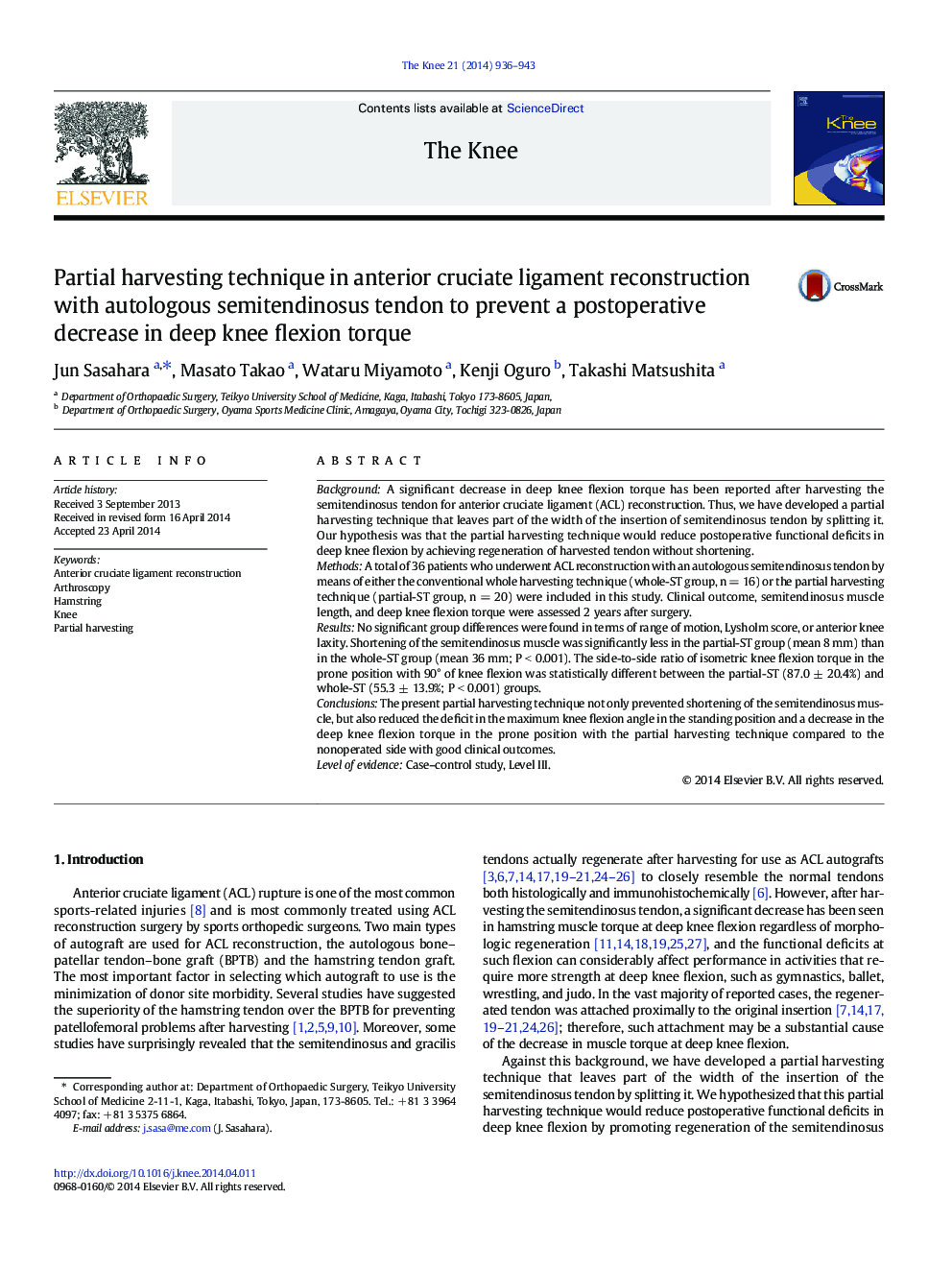| Article ID | Journal | Published Year | Pages | File Type |
|---|---|---|---|---|
| 4077232 | The Knee | 2014 | 8 Pages |
BackgroundA significant decrease in deep knee flexion torque has been reported after harvesting the semitendinosus tendon for anterior cruciate ligament (ACL) reconstruction. Thus, we have developed a partial harvesting technique that leaves part of the width of the insertion of semitendinosus tendon by splitting it. Our hypothesis was that the partial harvesting technique would reduce postoperative functional deficits in deep knee flexion by achieving regeneration of harvested tendon without shortening.MethodsA total of 36 patients who underwent ACL reconstruction with an autologous semitendinosus tendon by means of either the conventional whole harvesting technique (whole-ST group, n = 16) or the partial harvesting technique (partial-ST group, n = 20) were included in this study. Clinical outcome, semitendinosus muscle length, and deep knee flexion torque were assessed 2 years after surgery.ResultsNo significant group differences were found in terms of range of motion, Lysholm score, or anterior knee laxity. Shortening of the semitendinosus muscle was significantly less in the partial-ST group (mean 8 mm) than in the whole-ST group (mean 36 mm; P < 0.001). The side-to-side ratio of isometric knee flexion torque in the prone position with 90° of knee flexion was statistically different between the partial-ST (87.0 ± 20.4%) and whole-ST (55.3 ± 13.9%; P < 0.001) groups.ConclusionsThe present partial harvesting technique not only prevented shortening of the semitendinosus muscle, but also reduced the deficit in the maximum knee flexion angle in the standing position and a decrease in the deep knee flexion torque in the prone position with the partial harvesting technique compared to the nonoperated side with good clinical outcomes.Level of evidenceCase–control study, Level III.
